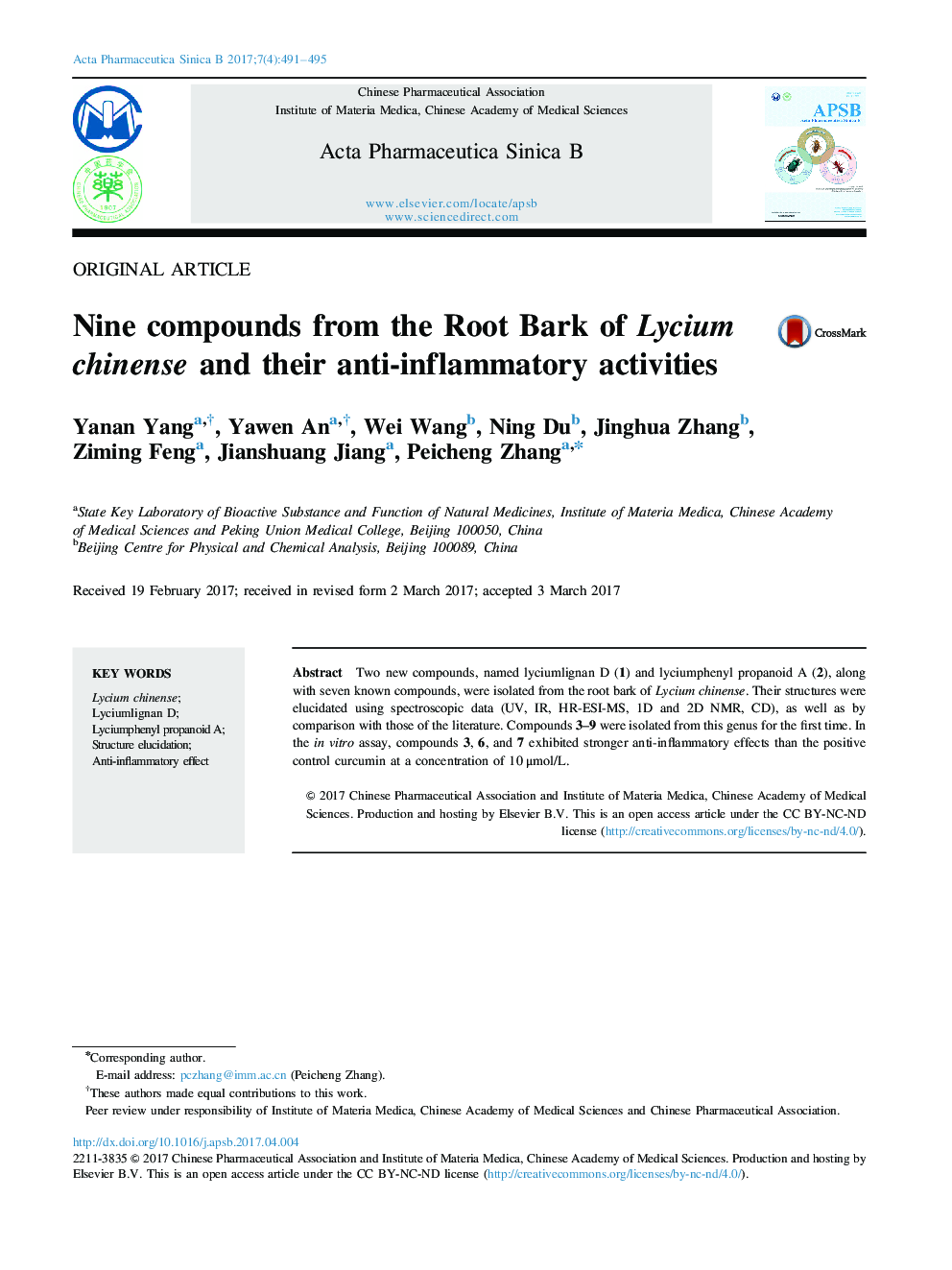| Article ID | Journal | Published Year | Pages | File Type |
|---|---|---|---|---|
| 5546572 | Acta Pharmaceutica Sinica B | 2017 | 5 Pages |
Two new compounds, named lyciumlignan D (1) and lyciumphenyl propanoid A (2), along with seven known compounds, were isolated from the root bark of Lycium chinense. Their structures were elucidated using spectroscopic data (UV, IR, HR-ESI-MS, 1D and 2D NMR, CD), as well as by comparison with those of the literature. Compounds 39 were isolated from this genus for the first time. In the in vitro assay, compounds 3, 6, and 7 exhibited stronger anti-inflammatory effects than the positive control curcumin at a concentration of 10 μmol/L.
Graphical abstractNine compounds were isolated from the root bark of Lycium chinense. Among them, compounds 1 and 2 were two new compounds, named lyciumlignan D (1) and lyciumphenylpropanoid A (2). Compounds 3, 6, and 7 exhibited anti-inflammatory activities on BV2 microglial cells at 10 and 1 μmol/L.Download high-res image (216KB)Download full-size image
